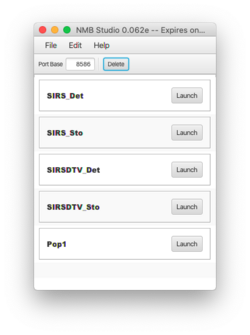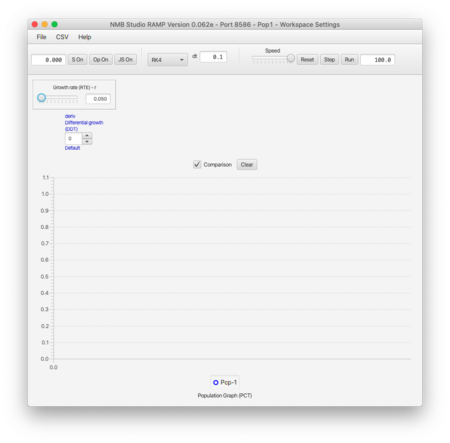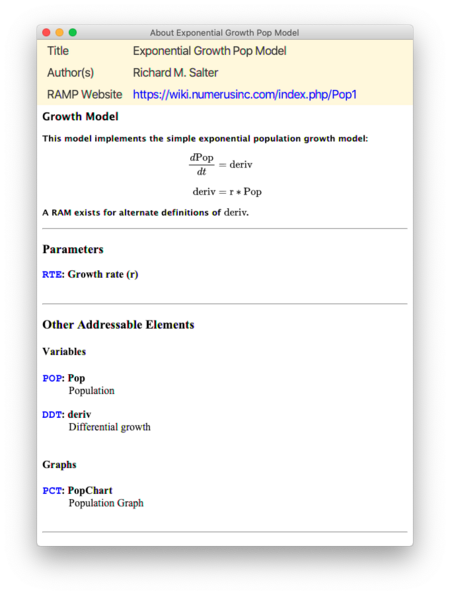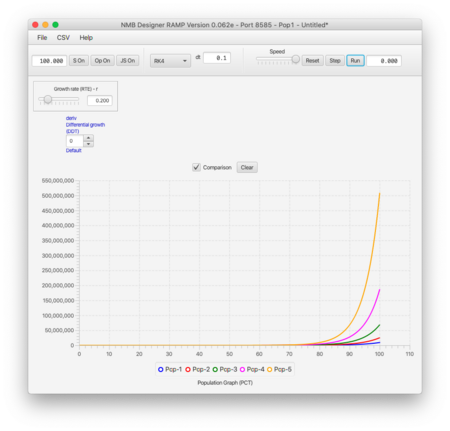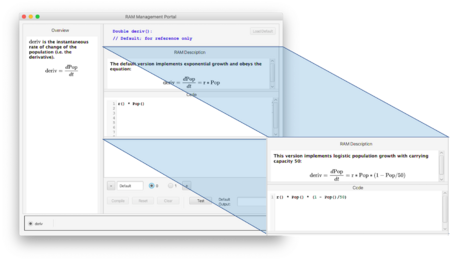Difference between revisions of "Pop1"
Jump to navigation
Jump to search
| Line 22: | Line 22: | ||
[[File:ex1pop.png|thumb|center|450px|Fig 3. Pop1 Documentation]] | [[File:ex1pop.png|thumb|center|450px|Fig 3. Pop1 Documentation]] | ||
===Discovering RAMs=== | |||
The documentation points out that a RAM exists for overriding the default definition of <code>deriv</code>. | |||
#<li value=4>Visit the RAM page either by double-clicking on the blue text of the RAM entry, or by clicking the '''Op On/Off''' button. | |||
[[File:ex1ram.png|thumb|center|450px|Fig 3. Pop1 Documentation]] | |||
Revision as of 18:48, 20 February 2022
This very simple Ramp introduces the advanced features.
Obtaining Pop1
- Download the file Pop1.xml from here.
- Launch Numerus Studio and select the File | Open Ramp(s)...; navigate to the folder containing Pop.xml and select it.
- When you are done Pop1 should appear on the Numerus Studio dashboard. (Fig. 1)
"Discovering" Pop1
- Launch Pop1, resulting in the application shown here:
- Open Help | About This Ramp... to learn about the model and its structure, as shown here:
- The document provides a description of the model and its salient parameters, variables, etc.; use this to familiarize yourself with the model. A link appearing in the title section will lead to more in-depth documentation.
- You now have an opportunity to test what you learn from the documentation by possibly running the simulation several times with different parameter values.
Discovering RAMs
The documentation points out that a RAM exists for overriding the default definition of deriv.
- Visit the RAM page either by double-clicking on the blue text of the RAM entry, or by clicking the Op On/Off button.
